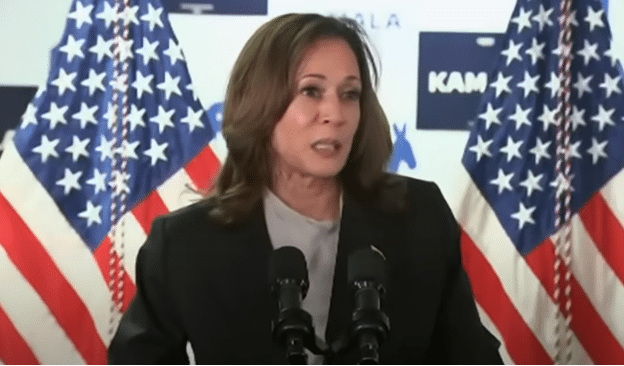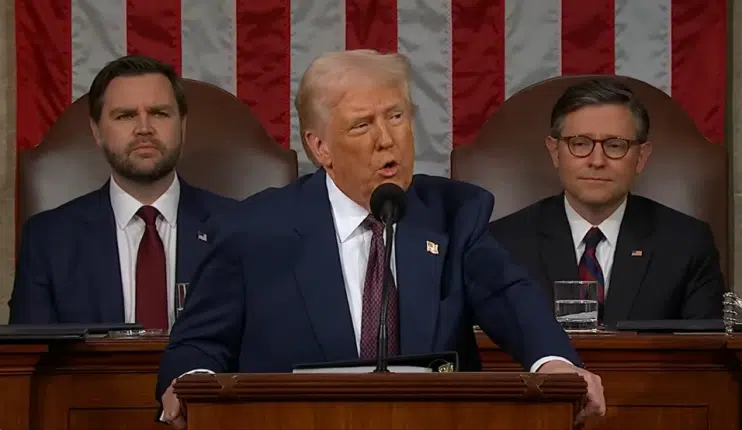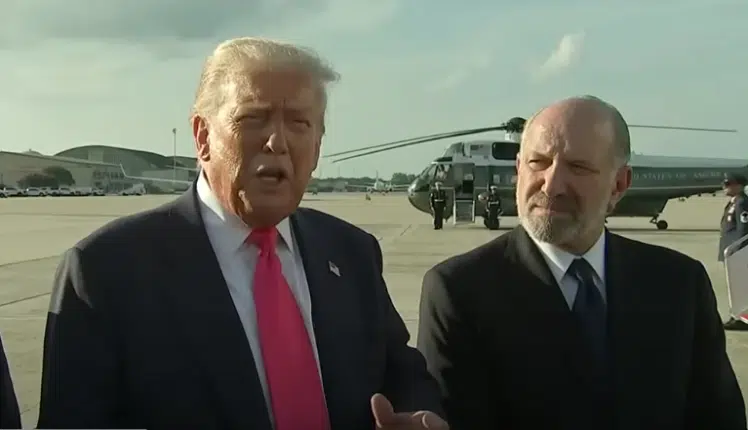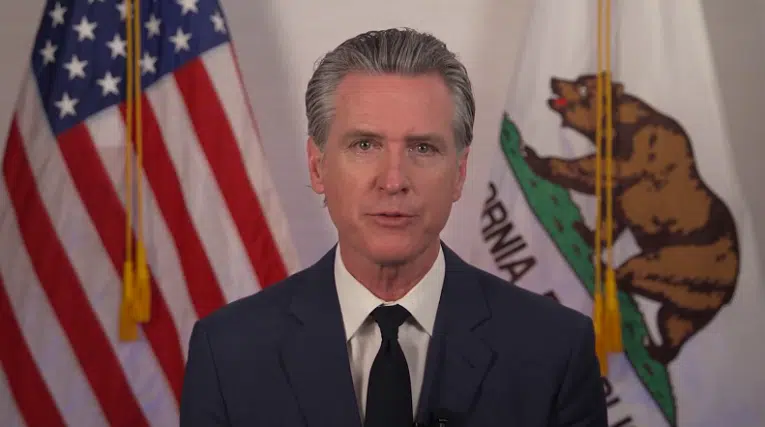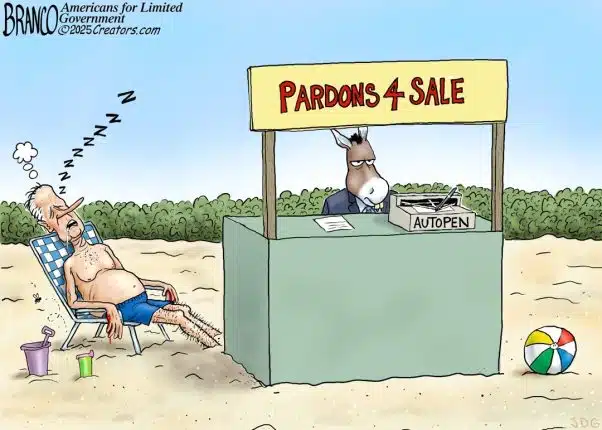Vice President Kamala Harris is enjoying a bump in national polls against former President Donald Trump following President Joe Biden stepping aside from the 2024 presidential race as Democrats are re-consolidating around Harris with less than three months to go until Election Day on Nov. 5, with the latest national polling average compiled by RealClearPolling.com showing Harris with a slight edge, 47.6 percent to 47.1 percent.
This appears to be the incumbency advantage reasserting itself. In U.S. history, incumbent presidents—defined as those sitting in office and standing for another term — have run for election 33 times. They won 23 times and lost 10 times, a 69.7 percent victory rate and 30.3 percent defeat rate.
The losers were John Adams in 1800, John Quincy Adams in 1828, Martin Van Buren in 1840, Grover Cleveland in 1888, Benjamin Harrison in 1892, William Howard Taft in 1912, Herbert Hoover in 1932, Jimmy Carter in 1980, George H.W. Bush in 1992 and Donald Trump in 2020.
Whereas, in years when there was an open seat in the White House, that is, when the sitting, incumbent president was not on the ballot, the incumbent party won 11 times and lost 14 times, a 44 percent victory rate, and 56 percent defeat rate.
The incumbent parties won open seat presidential elections in 1796, 1808, 1816, 1836, 1856, 1868, 1876, 1880, 1908, 1928 and 1988. And they lost in 1824, 1840, 1844, 1848, 1852, 1884, 1896, 1920, 1952, 1960, 1968, 2000, 2008 and 2016.
The last time it was a winner was when the sitting Vice President George H.W. Bush won in 1988. Before that, you have to go all the way back to 1928 when the incumbent party won an open seat.
As for, incumbent vice presidents who run and are nominated, they win about 50 percent of the time but it’s worth noting incumbent Vice Presidents usually only run after the incumbent president has been in power for 8 years usually, when the odds drop. Thomas Jefferson running in 1800 is an exception because in the early republic second place in the election got to serve as Vice President, and so is not an example of the incumbency advantage per se as John Adams was the sitting president standing for reelection.
That said, the incumbent vice presidents who ran and won were John Adams in 1796, Thomas Jefferson in 1800, Martin Van Buren in 1836 and George H.W. Bush in 1988. The losers were John Breckenridge in 1860, Richard Nixon in 1960, Hubert Humphrey in 1968 and Al Gore in 2000. That’s a 50 percent chance of winning, but if Jefferson is excluded (he was in the opposing party to Adams), the percentage drops to a 42.8 percent chance of winning, and a 57.1 percent chance of losing.
Of those, John Breckenridge and Hubert Humphrey were their party’s nominees when the sitting president had served less than two terms and both lost. But in both cases, the incumbent party, the Democrats, had been in power for eight years when the sitting vice president lost those elections (Franklin Pierce was not renominated in 1856 in favor of James Buchanan and Lyndon Johnson succeeded John Kennedy after Kennedy’s assassination in 1963).
Meaning, the Harris candidacy is the first time a sitting vice president is running when her party has only been in power for one term. So, how to gauge her odds? As an incumbent president? If so, it might make sense to increase Harris’ odds to the 69.7 percent chance of victory under normal circumstances since Democrats have only been in office for almost one term and incumbent parties in their first term usually win.
Stony Brook University professor Helmut Norpoth (disclosure: I took his class) appears to agree, using his model of primary performance as measuring success in elections, says that Harris inherits Biden’s incumbency advantage based on Biden’s performance in the primaries.
Norpoth wrote, “The forecast of a likely Harris victory in November takes account of the outcomes of early primaries (New Hampshire and South Carolina). While both Biden and Trump won their respective contests in those states, the margin of victory was far larger on the Democratic side. Transferring this advantage to Harris makes her the favorite in November. What also benefits Harris in the general election is the working of an electoral cycle that favors the White House party after one term. The combination of those two factors predicts a Harris victory over Trump in 2024 with 75-percent certainty.”
Norpoth added, “Granted Harris did not win a single vote in presidential primaries this year but the performance of President Joe Biden, whom she replaced as the head of the Democratic ticket after his withdrawal, augurs well for her success in November.”
Other times the primary model missed were in 1960, 2000 and 2020. Previously, Norpoth, whose model correctly predicted Trump would win in 2016 but incorrectly predicted Biden would lose in 2020, had given Biden a 75 percent chance of being reelected based on his performance in the Democratic Primaries.
So, that still leaves Trump with a 25 percent chance of winning—not great, but not impossible, either.
Another way to gauge re-election bids, given presidential term limits, is how long the incumbent party has been in power, and what the odds of re-election are for the incumbent party when still in their first term. John Adams’ presidency is generally considered as a member of Washington’s party, which became the Federalists.
Leaving Adams out of the mix, then, the years the incumbent party won after one term regardless of who the party’s nominee was were 1792, 1804, 1832, 1856, 1864, 1896, 1916, 1924, 1936, 1956, 1964, 1972, 1984, 1996, 2004 and 2012. The years the incumbent party lost after one term regardless of the nominee were 1828, 1844, 1848, 1852, 1888, 1892, 1980 and 2020.
Therefore, in U.S. history, incumbent parties in their first terms win re-election 66.6 percent of the time and lose 33.3 percent of the time.
So, what about the one-third of the time the challengers win? The thing to do from there is to examine what was unique about one-term administrations in modern history. They were Herbert Hoover, Gerald Ford, Jimmy Carter, George H.W. Bush and Donald Trump in 1932, 1976, 1980, 1992 and 2020. And they all had economic recessions. In fact, two out of three times the primary model failed, there were recessions. In 1960, Norpoth’s primary model had Nixon winning, but there was also a recession that year with the unemployment rate reaching 6.1 percent by Election Day, just as in 2020, when unemployment peaked at 14.8 percent in April 2020 and was still 6.7 percent by Election Day.
But so did Richard Nixon, Ronald Reagan, George W. Bush and Barack Obama have recessions earlier during their terms but all three were reelected relatively easily in 1972, 1984, 2004 and 2012, respectively. Whereas, when inflation outpaces personal incomes for any extended period of time, as it has now, coupled with a recession, it can make for a single term like Ford, Carter and H.W. Bush. Whereas, during Reagan, W. Bush and Obama, incomes outperformed inflation by a lot for most of their first terms.
Well, during the Biden-Harris administration, consumer inflation has increased 18.76 percent since Feb. 2021, while personal incomes have only increased 18.2 percent. Incomes have been catching up, but perhaps not fast enough as the presidential election is coming to a close.
On that count, the most recent CNBC poll taken July 31 to Aug. 4 found Trump leading Harris, 48 percent to 46, with Trump overwhelmingly favored on the economy, the top issue in the campaign. 40 percent said they would be better off financially if Trump were the president, compared to only 21 percent who said they’d be better off if Harris were elected. 35 percent said it would make no difference.
Therefore, if anything can unseat an incumbent who was otherwise expected to win, it’s the economy, either with high inflation, high unemployment, or both. The high inflation and crappy economy — unemployment is up 1.47 million since its Dec. 2022 low — could increase Trump’s chances of winning.
But they do not guarantee victory. If Trump and his campaign believe the election will be close as polls appear to indicate, then they must sell the proposition that the American people are not better off than they were four years ago. The economy is usually the metric voters use to judge the incumbents, but incumbents including Harris are still hard to beat.
Robert Romano is the Vice President of Public Policy at Americans for Limited Government Foundation.


